Halò, is mise J K! (Hello, I’m J K)
At the time of this site’s creation I’m a 37 year old Scotsman of Gaelic heritage. I know this as last year I did a DNA test with Scotland’s DNA and the response was that my DNA contains the “quintessential Celtic marker”. Apparently my paternal line hails from Leinster in Ireland and I’m potentially directly descended from the ancient Kings of Leinster.
Extract from my YDNA marker report.
Your marker of S145, the identifier of the Hibernians, is found all over Britain and Ireland, and also along part of the route Pytheas took from Massalia and the Mediterranean. It is present in small but significant numbers in Western France and Spain. One of its most interesting concentrations is in Brittany. Formerly known as Armorica, part of the Roman province of Gaul, this region changed its name to mean “Little Britain”. This happened because of a migration, an exodus from Southern England of Romano-British people who fled the Anglo-Saxon invasions of the 5th and 6th centuries. These were almost certainly aristocrats, landowners and townspeople of means, those with the most to lose and the ability to flee. They brought their marker with them and outside of Britain, S145 is most common in Brittany, Little Britain.
The exiles also brought their languages with them and Breton is related to Cornish and Welsh, the P-Celtic group of languages. Scots and Irish Gaelic and Manx make up the Q-Celtic group, what was spoken by your ancestors, the Hibernians. They are cousin-languages that evolved as dialects and they are closely identified with S145, what might be called the quintessential Celtic marker. In turn they are linked to Galician, a Celtic language that survives, just, in Northern Spain. In antiquity dialects of what is called Celtiberian were spoken all over what is now Spain and Portugal. Archaeology, language and DNA all combine to suggest strongly that the Celtic peoples of Britain and Ireland approached from the south, from Iberia. You belong to a specifically Irish sub-group of S145, and it is S169. It appears to concentrate in Leinster and it occurs frequently in men with the surnames of Byrne and Kavanagh. Murphys also often carry this sub-type. And there is a link with royalty. Some carriers appear to be descended from the medieval kings of Leinster, the men once known as the Chiefs of the Lagin. Their warbands crossed the Irish Sea after the fall of the Roman province of Britannia in the 5th century and left their name on the Lleyn Peninsula of North Wales.
The early medieval kings of Leinster gained notoriety because they invited the Normans into Ireland. Dermot MacMurrough lost his throne and in order to regain it, he promised the succession to Richard de Clare, a Norman earl known as Strongbow. And with typical Norman briskness, he took it. Nevertheless, Dermot has a modern successor; the Prince of Leinster is William Butler MacMorrough Kavanagh. He was born in 1944.
The Hibernians, your people, represent an extraordinary continuity from earliest times.
Though maternal lineage is a little less detailed, it is likely that my maternal line also came to Scotland via Ireland (piecing together the DNA results and what I know about my mum’s family history). So my ancestors were Gaels.. which led me to ask myself, what kind of a Quintessential Celt doesn’t even speak the language of his people?
Whilst living in Japan for an exchange year in 2009-2010 I also presented a short speech differentiating between the sounds of English, Scots and Gaelic and it wasn’t really until I carried out a little research that I realised how much in decline the language is. I can’t stand by and watch the language of my ancestors and one of the languages which so heavily influences Scottish culture vanish from existence. I’ll do what I can to ensure the survival of Gaelic.
As of Thursday 25th of September 2014, I began my journey to learning this language. Though the pace will be relatively slow at first with just one 2 hour evening lesson every week within term time at The University of Edinburgh, it is my intention to one day be fluent in Gaelic.
This blog is intended as a progress journal and something that I can look back on later which may be useful for helping our future children learn Gaelic at a later stage. All and any feedback is appreciated, particularly from Gaelic speakers!
Tapadh leat.. for visiting!


Comments
No comments yet. Be the first to react!